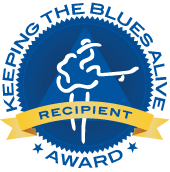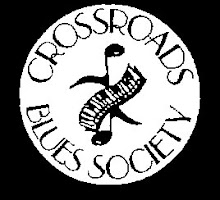When I Left Home – My Story
Buddy Guy – with David Ritz
Da Capo Press
www.dacapopress.com
267 pages
Buddy Guy has experienced a meteoric rise in popularity that makes him, along with B.B. King, the current elder statesman for blues music. The guitarist has achieved world-wide fame through his high energy live performances, outstanding recordings that successfully explored the full scope of Guy’s artistry plus his club, Legends, that is the preeminent blues bar in a city filled with live music venues. But all of this success did not come easily - it was decades in the making. We are fortunate that we now get a closer look at the Buddy Guy story, as told by the man himself.
When I Left Home is divided into three sections. The first six chapters detail the early years of Guy’s life down the backroads of Louisiana. The son of Sam & Isabell Guy, his childhood wasn’t out of the ordinary. He stood next to his father and started picking cotton at the age of nine. He enjoyed baseball, especially when he could listen to a Brooklyn Dodgers game on the radio and take pride in Jackie Robinson’s accomplishments. Guy also had a knack for taming wild horses. His father made sure that the young man knew the meaning of respect.
Each Christmas, a family friend named Henry Smith – nickname “Coot” – joined the Guy’s for dinner, after which Coot told stories and played his two-string guitar. Buddy loved the sound Coot was able to pull out of those two strings. He began to experiment with building his own guitar, stealing wire from his Mama’s new window screens and using rubber bands. Later, the family acquires an old phonograph just as John Lee Hooker’s “Boogie Chillen” was released and became the favorite record in the Guy household. A chance meeting with guitarist Lightnin’ Slim deepened Guy’s interest in the guitar. Finally his yearning is satisfied when his father buys Coot’s instrument.
As a teenager, Buddy lived with his sister, Annie Marie, in Baton Rouge. He continued playing guitar, discovered girls and worked a variety of jobs. He returned to help his father after his mother suffered a stroke but life wasn’t the same. Eventually, Guy’s father decides to leave the rural life and move everyone to Baton Rouge, where another life-altering experience was waiting. Guitar Slim had a huge hit with “The Things I Used to Do” and when he made a local appearance, Buddy was there to experience the frenzy of Slim’s live show with his flamboyant clothes and wild entrances courtesy of a 300 foot guitar cord. Everything Buddy would ever need to know about capturing the attention of an audience stems from what he learned from Guitar Slim.
The next section, titled When I Left Home, is a single chapter that finds Guy making the decision to leave home and head for a new life in Chicago. He had gotten encouragement from a friend, Lawrence “Shorty” Chalk, who was already living up north and promised that Buddy could stay with him. It seemed like Shorty was living the good life but upon his arrival in September, 1957, Guy discovers that the reality of big city life is far different than the bright picture Shorty had painted.
The bulk of the narrative is contained in the final section, After I Left Home. Guy describes his initial visit to Chess Records in an attempt to capture the attention of Leonard Chess. Soon he meets Muddy Waters and Otis Rush. It quickly becomes clear to Guy that he can’t compete with the guitar prowess of masters like Rush, Earl Hooker and Magic Sam. So he dazzles audiences and club owners with his showmanship while steadily proving his understanding of deep blues to other musicians and band leaders.
Guy relates plenty of stories about many of the legendary musicians from that generation. And chapter titles like “Wild Little Nigger From Louisiana” make it readily apparent that Guy isn’t about to pull any punches. He has plenty to say about Willie Dixon on the issue of song copyrights and covers his long-running partnership with Junior Wells in several chapters. Points are made regarding excessive alcohol use and womanizing without dwelling on the topics. And Guy openly admits his own shortcomings.
In 1972, deciding he wanted to curtail being on the road so much for the sake of his family, Guy decides to buy the Checkerboard club on Chicago’s south side. The experience set the stage for him to open Legends in a better neighborhood seventeen years later.
The only short-coming with the book is that the last forty years of Guy’s career are briefly covered in an equal amount of pages that conclude the book. Given that during that time Guy has played countless high-profile gigs and shared the stage with too many legendary musicians to count as he achieved international fame, one would think that there are still many stories untold.
David Ritz provides a big assist in helping Guy keep the narrative sharp and focused without stripping away the vital elements of Guy’s character. We are fortunate to have this opportunity to hear Buddy’s story in his own words. This is one of those books that draws you in and quickly puts you in the can’t-put-this-down mode. It is a worthwhile read that provides an insider look at the glory days of Chicago blues and one of its indisputable legends.
Reviewed by Mark Thompson







No comments:
Post a Comment